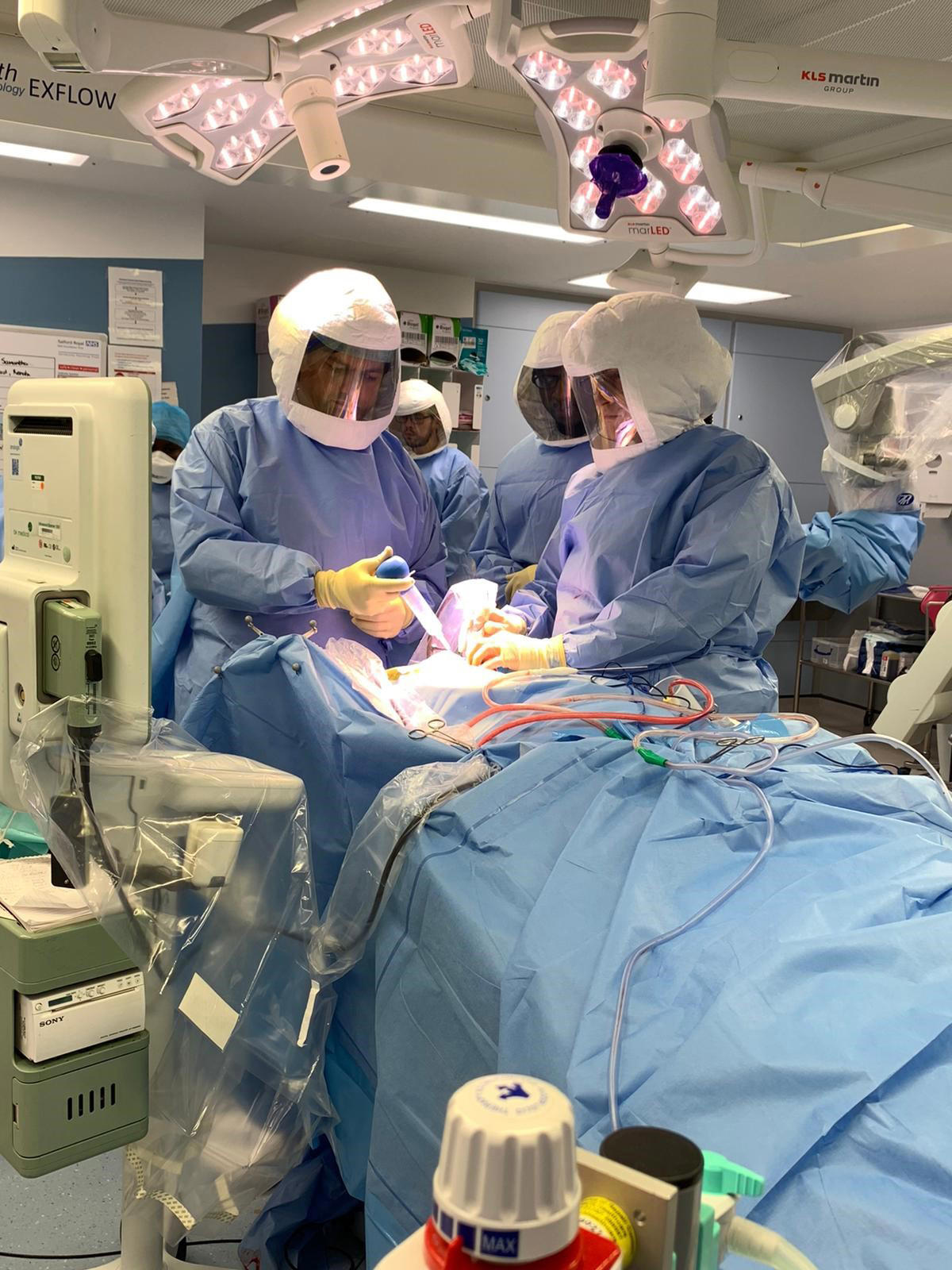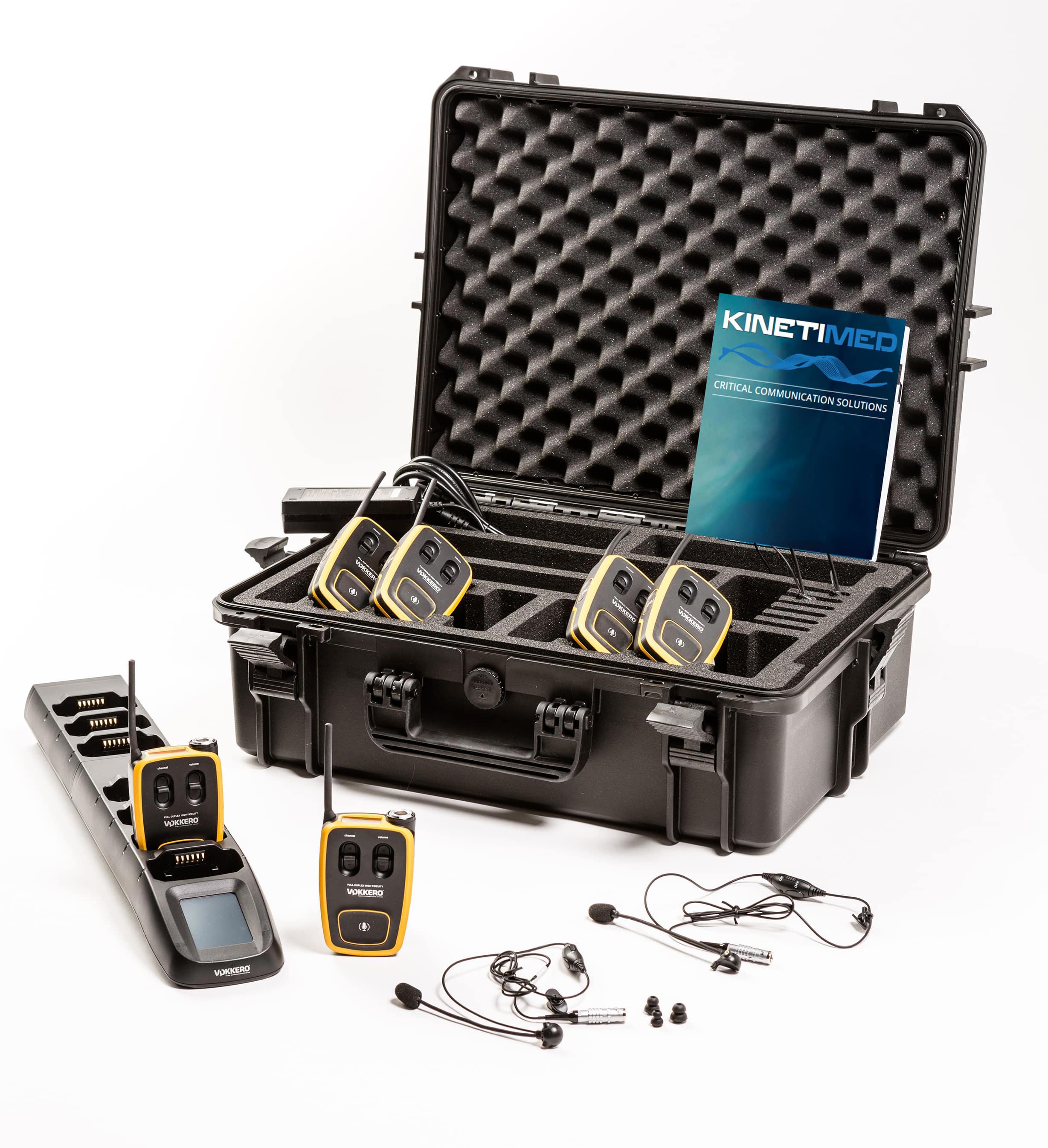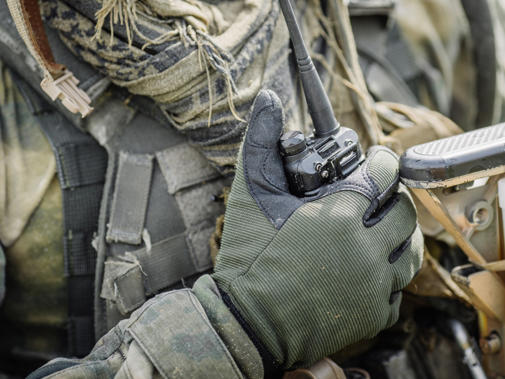Clinical lead for emergency general surgery at Oxford University Hospitals Giles Bond-Smith has spoken of the tremendous difference made by specially designed secure-communication earpieces, that have allowed him and his colleagues to communicate more easily in theatre.
The earpieces, which transmit sound through conduction and in-ear bone stimulation, allow users to talk to one another on secure frequencies and unhindered by and without compromising facial PPE.
Mr Bond-Smith, who is a consultant emergency and hepato-pancreato-biliary surgeon, said he had sought out a technological solution during the first wave of the pandemic after encountering problems communicating with colleagues when in theatre.
 Earpieces in use at Salford Royal NHS Foundation Trust
Earpieces in use at Salford Royal NHS Foundation Trust
He said: ‘What became really apparent was when we all had to get into our level-two PPE it became a nightmare to actually try and communicate with one another, especially when you’re in a busy and what we would call hostile environment such as an emergency theatre.
‘I thought to myself, “who else works in a hot, sweaty and hostile environment with face or gas masks on?” and it occurred to me that the armed forces might hold a solution.’
Mr Bond-Smith was eventually put in touch with KinetiMed, a firm specialising in secure communications equipment headed up by former UK special forces communicator Shaun Leavy.
Following discussions around the challenges being encountered by surgical staff and the kind of requirements that communication equipment would need to be met in a clinical environment, the two parties hit upon a piece of kit involving earpieces with inbuilt microphones which transmit sound directly into the wearer by conduction and stimulation of the bones of the inner ear.
Hands free
After successfully trialling the earpieces in his department last year as part of a pilot programme, Mr Bond-Smith is now hopeful his trust will enable the devices to be used on a permanent basis.
He said: ‘We frequently use radios in the NHS which is OK when you can hold something, but when you’re sterile or in full PPE you can’t hold a handset, you need to be able to talk hands free and you can’t have the seal around your face mask broken.
‘With bone conduction you don’t need a [throat] microphone so you can put the earpieces in and put on a level two facemask, which must be sealed all around your face, and there’s no microphone under the mask potentially breaking that seal.
‘I can wear whatever kit I want, and the earpieces just pick up the sound.’
He added: ‘Everybody gets their own earpiece so you’re not having to worry about cleaning and sterilising. When they turn up to work, just like having a stethoscope around their neck, they’ll have their earpieces in and then they just need to pick up a radio pack and plug in.’
Networking
Mr Bond-Smith said, in addition to assisting with communication inside the theatre, the earpieces allowed him and his team to communicate with colleagues in other locations.
He said, with access doors to operating theatres locked during procedures on COVID-positive patients, communication between the surgical team and those outside had become more challenging, with staff previously resorting to holding up written messages against theatre windows.
‘It allows you to communicate between multiple team members in your theatre and team members outside your theatre, so the applications are huge.
‘I might be carrying out a procedure on a patient due to undergo a transplant operation, and if I want to communicate with the theatre next door and let the surgeons there know I’m ready and what their status is.’
‘The ITU might be a [COVID] red zone, but with my earpieces I can communicate with the staff working in there without even having to go inside.’
 Credit: Vokkero by VOGO
Credit: Vokkero by VOGO
In addition to its use in a pilot scheme at Oxford, the technology is also being used at Salford Royal Hospital and University College Hospital in London.
Mr Leavy, who underwent advanced training as a trauma medic and gained further experience volunteering in NHS emergency departments, said he had never expected his company’s equipment would be deployed within the NHS.
He said he had never expected his firm to provide equipment to those working in a medical or healthcare setting, but soon found a demand for secure communications equipment arising from the challenges posed by COVID and increased PPE.
GP use
In addition to being used within hospital settings, the radio solution has also been utilised by a local GP practice as part of the COVID vaccination roll-out, during which three GPs managed to vaccinate 300 patients in just one session maintaining social distancing via radio connectivity.
He said: ‘When COVID hit that did change the world and the way that people operated.
‘When you look at the dynamics of how we found the right radios and headsets it was exactly how we would have done it in the military. It was just a question of finding the right radio, right head set and right solution to fit with how they [the surgical team] operate.
‘Knowing that a surgeon is going to go to work and be able to increase how they do things, and be able to take a little bit of stress away from them, gives you a really good feeling to know that you are adding value to those operations.
‘If their job is made easier by what we’re doing then that makes me really, really happy.’

